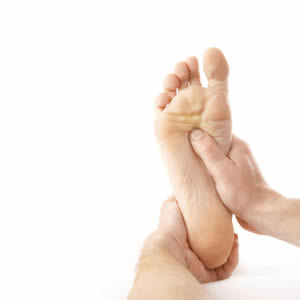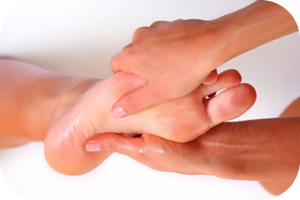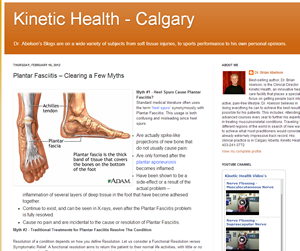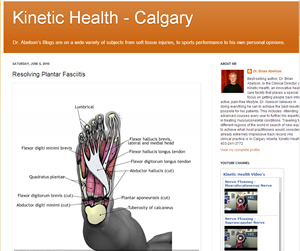Resolving Plantar Fasciitis
 What is Plantar Fasciitis?
What is Plantar Fasciitis?
The suffix “itis” means inflammation. In medical literature, Plantar Fasciitis is most often described as “an inflammation of the plantar aponeurosis or plantar fascia”.
What Causes Plantar Fasciitis?
Plantar Fasciitis (PF) – like all repetitive strain injuries – typically develops over a long period of time and are caused by:
- Repetitive motions that stress soft tissues in the feet and legs.
- Standing on hard surfaces for long periods of time.
- Existing muscle imbalances.
- Increased physical activity.
- Shoes that provide inadequate support.
- Acute trauma to the feet.
Without the opportunity to heal properly, the fascia and soft-tissues of the feet become inflamed and irritated by continual usage. These increased stresses may result in:
- Pain along the bottom of the foot.
- Alterations in normal foot biomechanics with physical activity.
- Development of soft-tissue restrictions through structures ranging from the bottom-of-the-foot, up through the hamstrings, and into the hips.
Resolving Plantar Fasciitis
Effective resolution of Plantar Fasciitis requires a thorough understanding of the foot, how it functions, and its kinetic chain relationships to the other structures of the legs, knees, hips, and even to the core. Any successful treatment protocol must take all these elements into account, and combine treatment with an exercise routine that addresses all affected elements of the kinetic chain. Click on each of the following tabs to better understand our treatment process.
A Patient’s Story
Dear Dr. Abelson:
I wanted to let you know about my experience with Active Release Techniques (ART). For many years I had suffered from Plantar Fasciitis on both of my feet. The pain would sometimes become unbearable. Although I wear orthotics, I could never quite get the relief I was looking for.
That is, until I heard about ART. After only three treatments with you, I received significant relief from the pain. By the end of my treatments, I was completely pain free, and have remained pain free for over a year and a half. I am very happy at the outcome and would not hesitate to use this treatment again.
Sincerely,
Patricia Van Witsen
More Information about Plantar Fasciitis
Kinetic Health provides a broad range of information resources (books, blogs, and videos) that you can use to help yourself heal from Plantar Fasciitis. Click on each of the following tabs to access these resources.
For information about our clinic in Calgary, Alberta, please visit to www.kinetichealth.ca.
(COPYRIGHT KINETIC HEALTH 2013 – ALL RIGHTS RESERVED)


 The inflammation process causes the body to lay down additional restrictive scar tissue across injured or already inflamed soft-tissue structures, and with Plantar Fasciitis, results in a shortening of the plantar flexors.
The inflammation process causes the body to lay down additional restrictive scar tissue across injured or already inflamed soft-tissue structures, and with Plantar Fasciitis, results in a shortening of the plantar flexors. Treating the Kinetic Chain
Treating the Kinetic Chain To ensure complete resolution of Plantar Fasciitis, practitioners should always look beyond the immediate symptomatic area of the foot, and consider structures throughout the body that may also have been affected.
To ensure complete resolution of Plantar Fasciitis, practitioners should always look beyond the immediate symptomatic area of the foot, and consider structures throughout the body that may also have been affected.

